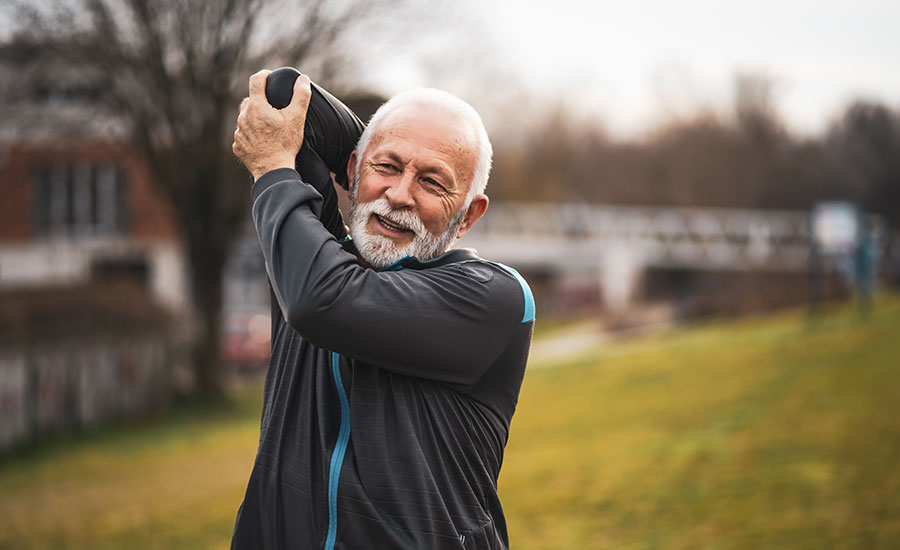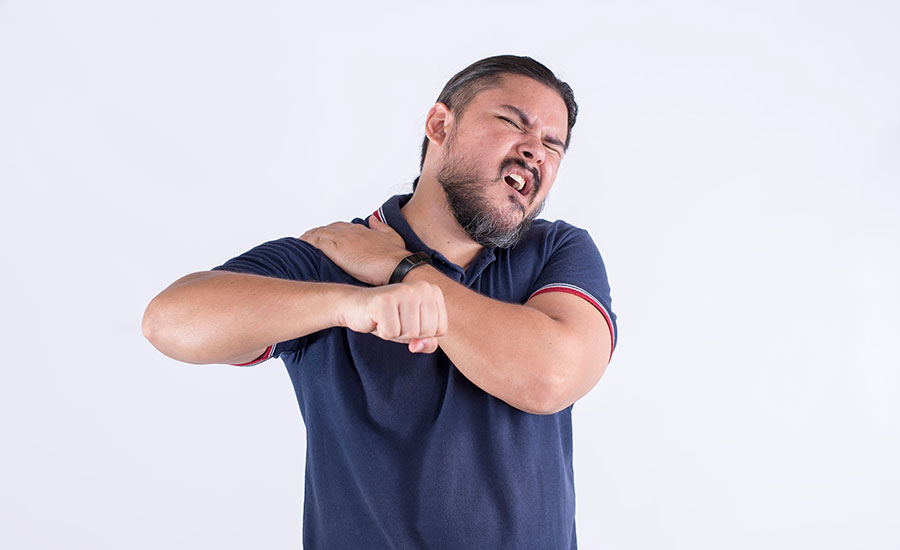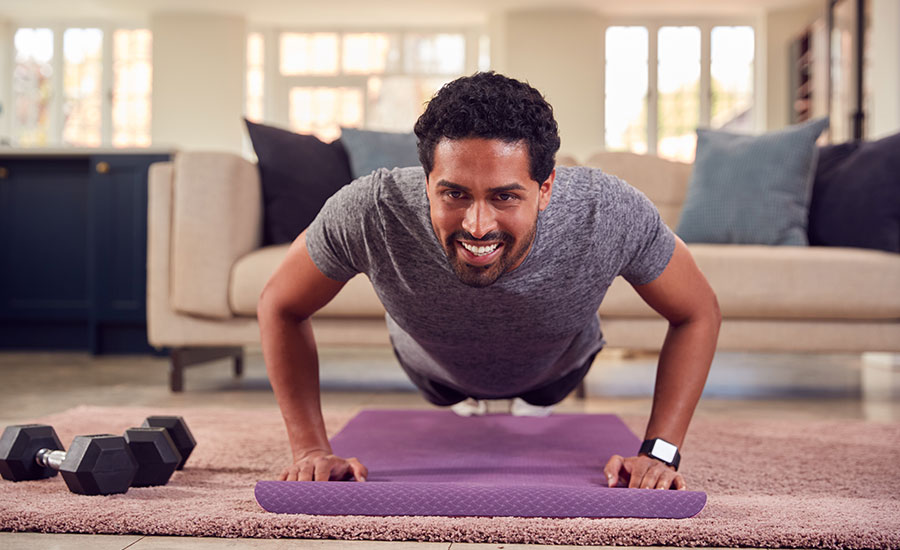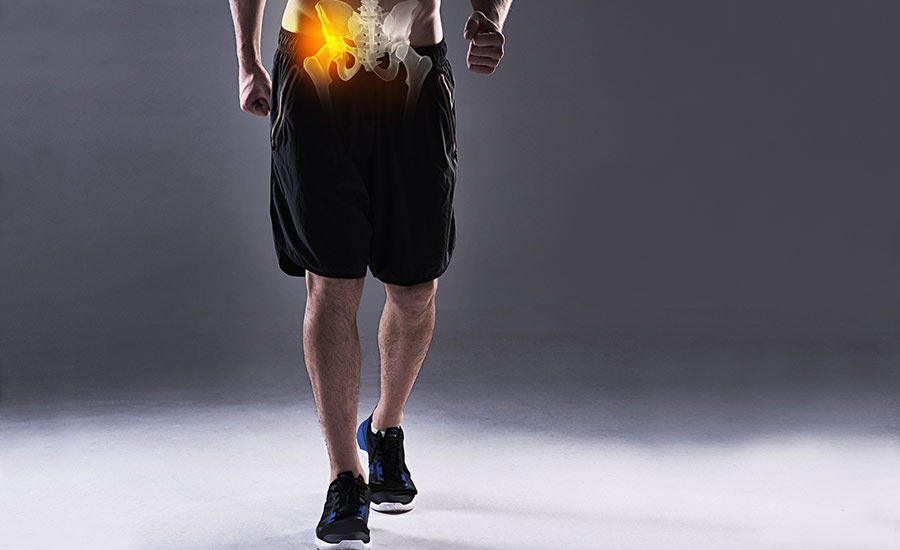
Rotator cuff pain caused by inflammation or injury can affect your ability to perform everyday activities and hinder your overall quality of life. Fortunately, certain exercises and stretches can play a key role in managing this pain, aiding recovery and even preventing future injuries.
While some movements can help you find relief, it’s important to know that others can exacerbate the issue.
We’ll share the best rotator cuff pain exercises to perform for pain relief, explain which exercises to avoid and introduce you to our diverse treatment options at OrthoEast.
What Causes Rotator Cuff Pain?
Rotator cuff pain is typically caused by injuries or conditions that affect the shoulder joint’s function through the four muscles and the tendons that make up the rotator cuff.
The most common causes of rotator cuff pain include:
- Rotator cuff tears: A rotator cuff tear causes damage to the muscles or tendons of the rotator cuff, either partially or fully. This is one of the most common causes of rotator cuff pain.
- Tendinitis: This condition occurs when a tendon becomes inflamed or irritated. Rotator cuff tendinitis, often resulting from repetitive overhead movements like throwing a ball or lifting weights, can lead to significant pain in the shoulder area.
- Impingement: This condition occurs when the shoulder blade exerts pressure on the underlying soft tissues, such as the rotator cuff tendons, when the arm is lifted. Over time, impingement can lead to tendinitis and bursitis, causing increased pain and reduced movement.
- Bursitis: This is inflammation of the bursa, which is a small, fluid-filled sac that acts as a cushion between a bone and other moving parts, such as muscles, tendons or skin. Bursitis can cause a dull ache or a sensation of heat or swelling in the shoulder.
- Calcific tendonitis: This condition causes calcium deposits to form in the rotator cuff tendons, leading to significant pain. It is not entirely clear why these deposits occur.
- Arthritis: As the most common form of arthritis, osteoarthritis can affect any joint, including the shoulder, leading to pain and limited movement. It’s a less common cause of rotator cuff pain compared to the above conditions, but it can still cause significant discomfort and disability.
The above conditions can cause a range of symptoms, including:
- Dull ache deep in the shoulder
- Disturbed sleep due to pain
- Arm weakness
- Difficulty with activities that involve lifting or rotating the arm

6 Best Rotator Cuff Pain Exercises
Exercise and physical therapy are often recommended as part of the treatment for rotator cuff injuries or pain. Rotator cuff pain exercises can help strengthen the muscles, improve flexibility and restore range of motion.
Here are some of the top rotator cuff pain exercises you can perform to find relief from rotator cuff pain:
Pendulum Exercise
The Pendulum exercise is a gentle way to increase mobility and decrease pain in the shoulder — especially in the case of a rotator cuff injury. This exercise uses the force of gravity and the momentum of your arm to passively mobilize the shoulder joint.
To perform this exercise:
- Stand upright and slightly bend at the waist. You can lightly hold onto a table or chair with your non-injured arm for support if needed. Let your affected arm hang down towards the floor.
- Gently sway your body in a slight circular motion, allowing the momentum to swing your hanging arm in small circles. Remember, you should not be actively moving your arm with your muscles, but rather letting the gentle swaying motion of your body move your arm.
- Start with small circles, about the diameter of a dinner plate, and gradually increase the diameter if it’s comfortable. Do this for about 30 seconds.
- Reverse the direction of the movement, making circles in the opposite way for another 30 seconds.
- Repeat this exercise a few times a day for pain relief.
Doorway Stretch
The doorway stretch is a simple and effective exercise to improve flexibility and range of motion in the shoulders. It’s often used to alleviate tightness and discomfort associated with conditions like a rotator cuff injury.
To perform this exercise:
- Stand in an open doorway. Spread your arms out to the side and place your hands or forearms on the door frame at about shoulder height. Each elbow should be at a 90-degree angle.
- Slowly lean or step forward until you feel a gentle stretch in your shoulders and chest. Make sure to keep your back straight and avoid leaning your body forward. The movement should come from the shoulders.
- Maintain this position for 15-30 seconds as tolerated.
- Repeat this stretch three to five times for pain relief.
External Rotation
External rotation exercises are frequently used in rehabilitation and exercise routines to strengthen the rotator cuff muscles and improve shoulder joint function. These muscles play a critical role in stabilizing the shoulder during arm movements.
To perform this exercise:
- Stand upright and hold a resistance band with both hands. Your hands should be in front of your stomach with your elbows, bent at a 90-degree angle, and your upper arms should be snug against your sides. This is your starting position.
- Keeping your elbows close to your sides, slowly rotate your forearms outward, stretching the band and moving your hands away from each other. You should feel your shoulder muscles contracting.
- Pause for a moment when your hands are as far apart as comfortably possible, or when your forearms are roughly parallel with the floor.
- Slowly bring your hands back together to the starting position.
- Repeat this exercise for 10-15 repetitions and aim for 2-3 sets.
Internal Rotation
Internal rotation exercises are also important for strengthening the rotator cuff muscles and enhancing shoulder stability.
To perform this exercise:
- Secure one end of a resistance band to a doorknob or a similar sturdy fixture at around waist height. Stand sideways to the door and hold the other end of the band with the hand of the arm closest to the door. Keep your elbow bent at a 90-degree angle and your upper arm close to your side.
- Slowly rotate your forearm towards your body, pulling the band across your waist. You should feel your shoulder muscles engaging.
- Pause for a moment when your hand reaches the front of your stomach or as far as comfortably possible.
- Slowly reverse the movement to bring your arm back to the starting position, maintaining control as you release the band’s tension.
- Repeat this exercise for 10-15 repetitions, then switch to the other side. Aim for 2-3 sets on each side.
- You can watch the demonstration for this exercise in the previous external rotation video.
Shoulder Blade Squeeze
The shoulder blade squeeze exercise, also known as scapular retraction, is an excellent exercise to improve posture and strengthen the muscles between your shoulder blades.
To perform this exercise:
- Stand or sit upright with your arms at your sides. Your feet should be shoulder-width apart if standing. If sitting, keep your back straight and avoid leaning against the chair back.
- Gently pull your shoulder blades (scapulae) back and down, as if you’re trying to squeeze a pencil between them. It’s important to ensure that this movement is not forced or exaggerated — a gentle squeeze is enough.
- Maintain this position for about 5-10 seconds. You should feel a gentle tension between your shoulder blades.
- Slowly release back to the starting position.
- Repeat this exercise for 10-15 repetitions, for 2-3 sets.
Arm Reach
The arm reach exercise is a great movement that helps to improve shoulder mobility and stability, while also enhancing core strength.
To perform this exercise:
- Begin in a tabletop position on your hands and knees. Your hands should be directly under your shoulders and your knees should be under your hips.
- Slowly extend one arm out in front of you, keeping it level with your body. Try to create a straight line from your extended hand all the way down to your tailbone and extended leg.
- Maintain this position for a few seconds, focusing on stability and balance.
- Slowly bring your arm back to the starting position.
- Repeat this movement 10-15 times, then switch to your other arm.
Remember, all exercises should be performed in a slow, controlled manner without causing increased pain. It’s important to warm up before starting these exercises and cool down afterwards. If these exercises increase your pain or if they fail to improve your symptoms over time, seek medical advice to find alternative options for pain relief.
Exercises To Avoid With a Rotator Cuff Injury
If you have a rotator cuff injury, there are certain exercises that can aggravate your condition and potentially delay healing or even cause further damage.
Here are the exercises and activities you should avoid:
- Overhead activities: Some overhead activities can put a significant amount of strain on your rotator cuff. These exercises include military presses, overhead presses or overhead triceps extensions.
- Heavy lifting: While light weightlifting can be beneficial in strengthening the shoulder muscles, heavy weightlifting can strain a damaged rotator cuff.
- High-intensity throwing: Sports or exercises that involve a lot of throwing or high-intensity pitching can exacerbate rotator cuff injuries.
- Exercises involving high impact or jerking motions: This can include certain types of plyometric exercises or exercises that involve a rapid change of direction or speed.
- Bench presses: The position required for bench presses can put a lot of stress on your rotator cuff — especially if performed incorrectly.
- Excessive or aggressive stretching: While gentle stretching can be beneficial, stretching the shoulder muscles too forcefully or too frequently can lead to further damage.
- Push-ups and pull-ups: These exercises can place a significant amount of stress on your rotator cuff muscles if your injury is severe or if these exercises are done with improper form.

Treatment For Rotator Cuff Pain at OrthoEast
Treatment for rotator cuff pain depends on the severity of the injury, the patient’s health status and their individual needs.
At OrthoEast, we take a conservative-first approach to diagnostics and treatment. Based on the evaluation of your injury, our specialists may recommend a surgical procedure if conservative treatments are not effective for lasting pain relief.
Our treatment strategies for rotator cuff injuries include:
Pain Management
The primary aim of pain management is to alleviate discomfort through various conservative and non-operative methods.
Conservative or non-operative pain management methods include:
- Rest and activity modification: Resting the shoulder and avoiding activities that exacerbate pain is the first step in treating a rotator cuff injury. This might involve changes in daily routine or work activities.
- Physical therapy: A physical therapist can guide you through exercises designed to reduce pain while restoring flexibility and strength to your shoulder. This might include range-of-motion exercises, strengthening exercises and exercises to improve your shoulder’s proprioception (sensory awareness).
- Cold and heat therapy: Applying ice to the shoulder can help reduce inflammation and alleviate pain. Heat therapy can help relax and loosen tissues and stimulate blood flow to the area.
- Use of assistive devices: In more severe cases, the use of a sling to immobilize the shoulder might be recommended for pain management.
Pharmacological pain management methods include:
- Non-steroidal anti-inflammatory drugs (NSAIDs): Over-the-counter medications like ibuprofen (Advil) or naproxen (Aleve) can help reduce pain and inflammation.
- Corticosteroid injections: If the pain is severe and not relieved by over-the-counter medications, our team might recommend a corticosteroid injection into the shoulder joint. These injections can provide temporary but potent relief from pain and inflammation.
- Topical medications: Topical creams, gels, or patches that contain NSAIDs or local anesthetics can be applied to the shoulder to help relieve pain.
Shoulder Surgery
In more severe cases or if conservative treatments are not effective, surgery may be necessary. The type of surgery that our specialists will recommend depends on the type and extent of your rotator cuff injury.
Our orthopedic specialists perform procedures such as shoulder arthroscopy to repair damaged tissues, shoulder replacement surgery for severe cases and shoulder repair/preservation surgeries. Our team will work with you to find the right treatment option for lasting pain relief.
Rotator Cuff Pain Exercises Not Helping? Schedule An Appointment at OrthoEast
If you are experiencing shoulder pain that can be managed by conservative treatments, make an appointment with our shoulder specialists at OrthoEast. Our fellowship-trained, board-certified physicians specialize in orthopedic care and offer personalized treatment plans for every patient.
Together, we will identify the cause of your discomfort and establish the most suitable approach for lasting pain relief.
We have numerous accessible locations across New Jersey and New York, dedicated to delivering the highest level of care.
Our shoulder specialists include Dr. Anthony Festa, Dr. Casey Pierce and Dr. Anthony Scillia, who will focus on your shoulder pain relief and improve your quality of life.



